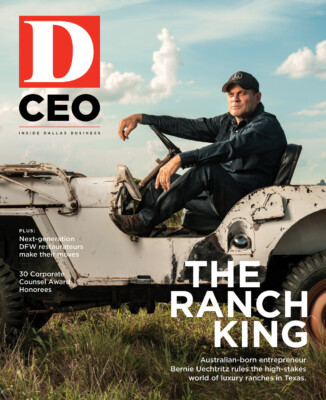Texas went into the COVID-19 crisis a leader among states in economic growth and job creation. The latest data say the state’s coming out of the pandemic the same way. Over the past 12 months, for example, it ranked second to California in adding jobs and second to Nevada in percent gain in employment.
Nothing unusual in that. The Texas economy has been sprinting ahead for decades—ever since it bounced back from the oil-price shock of the mid-1980s. The state’s political and business elites and many analysts (us included) credit the state’s sustained prosperity to the Texas model of lower taxes, smaller government, and economic freedom. The approach works because it gives markets and the private sector more room to operate. Texas offers fertile ground for entrepreneurs to start businesses—and sometimes fail. It’s a place where companies are more free to innovate and pivot—and sometimes go belly-up. Texas gives workers a chance to find jobs—and sometimes lose them.
Critics are always taking potshots at the Texas model, but it delivers results and draws crowds. Thousands of out-of-state companies chose the state as the place to grow their businesses. Millions of people came, too, attracted by Texas’ low cost of living and employment opportunities. The state’s economy looks rosy right now, with growing employment despite the pandemic and the worst inflation in 40 years. The threats to the Texas model are longer-term and, to a degree, speculative. They center on three broad areas: cost of living, labor supply, and the external environment.
Comparative Cost of Living
The nation slogged through two housing bubbles in this century. In the mid-2000s, housing prices rose more slowly in Dallas-Fort Worth and Houston than in most other large metropolitan areas—by a wide margin (see sidebar). Another housing-price spike came in 2022. According to the Freddie Mac House Price Index, North Texas dwellings now cost 51 percent more than they did just 30 months ago. Houston housing prices are up 36 percent.
Texas homes are still a lot cheaper than in many other states, but housing price increases are now on par with other top-10 metros. DFW ranked fourth behind Phoenix, Miami, and Atlanta—and ahead of Los Angeles. Houston was right behind Los Angeles in appreciation.
Texans are spending more on apartment rents, and winter storms and summer heat have made for shockingly high electricity bills.
Prices for homes, apartments, and electricity reflect local supply and demand. At some point, these expenses may begin to erode the cost-of-living edge that gave companies and workers strong incentives to relocate to Texas.
Politics and Labor Supply
From 2012 to 2019, Texas’ labor force grew by more than 175,000 people a year. In the economic tumult of the past two-and-a-half years, the annual pace was even higher at 232,000, helping fuel the demand that pushed up housing prices. Some new entrants were native Texans, of course, but it’s noteworthy that California’s labor force shrank at an annual pace of more than 72,500 since January 2020 and New York’s by 170,000.
So, why worry? We’ve already pointed to one reason—a potential spike in the cost of living. A second concern centers on politics. Many times, winning elections and setting legislative priorities are not decided on economic issues but on social concerns. Hot-button issues of the day include transgender and abortion rights, gun and religious rights, and immigration. Many Texans favor one side; many Texans favor the other.
Most companies wish to avoid being dragged into America’s divisive culture wars. They can’t win. They fear repercussions. A particular concern is whether the political climate will sour workers on Texas, especially the highly skilled, highly mobile tech contingent in demand across the country. Maintaining past growth rates could require Texas to expand its labor force by 175,000 to 225,000 workers every year. If the cost of living keeps rising and political repugnance sets in, that could be a tall order.
External environment
A lot went Texas’ way over the past three decades. Trade flourished, and Texans became America’s top exporters. Mexico opened its economy, and we led the charge south. Immigrants arrived, and the state had jobs for them. Energy boomed, and Texans hit a gusher.
Going forward, that’s not likely to be the world we’ll be living in. Higher shipping costs, supply chain bugaboos, and trade barriers pose obstacles to imports and exports. Mexico has turned inward under President Andres Manuel Lopez Obrador. Immigrants face hostility in Texas and elsewhere. The oil and gas business, booming now, faces global challenges from climate change policies.
For the rest of the decade and beyond, the state may find that growth won’t come as easily as it once did—unless private businesses once again reinvent the state’s economy to adjust to new realities and seize new profit opportunities. That’s what the Texas model does best.
W. Michael Cox is professor of economics in the Bridwell Institute for Economic Freedom at Southern Methodist University’s Cox School of Business. Richard Alm is writer-in-residence at the Bridwell Institute.






